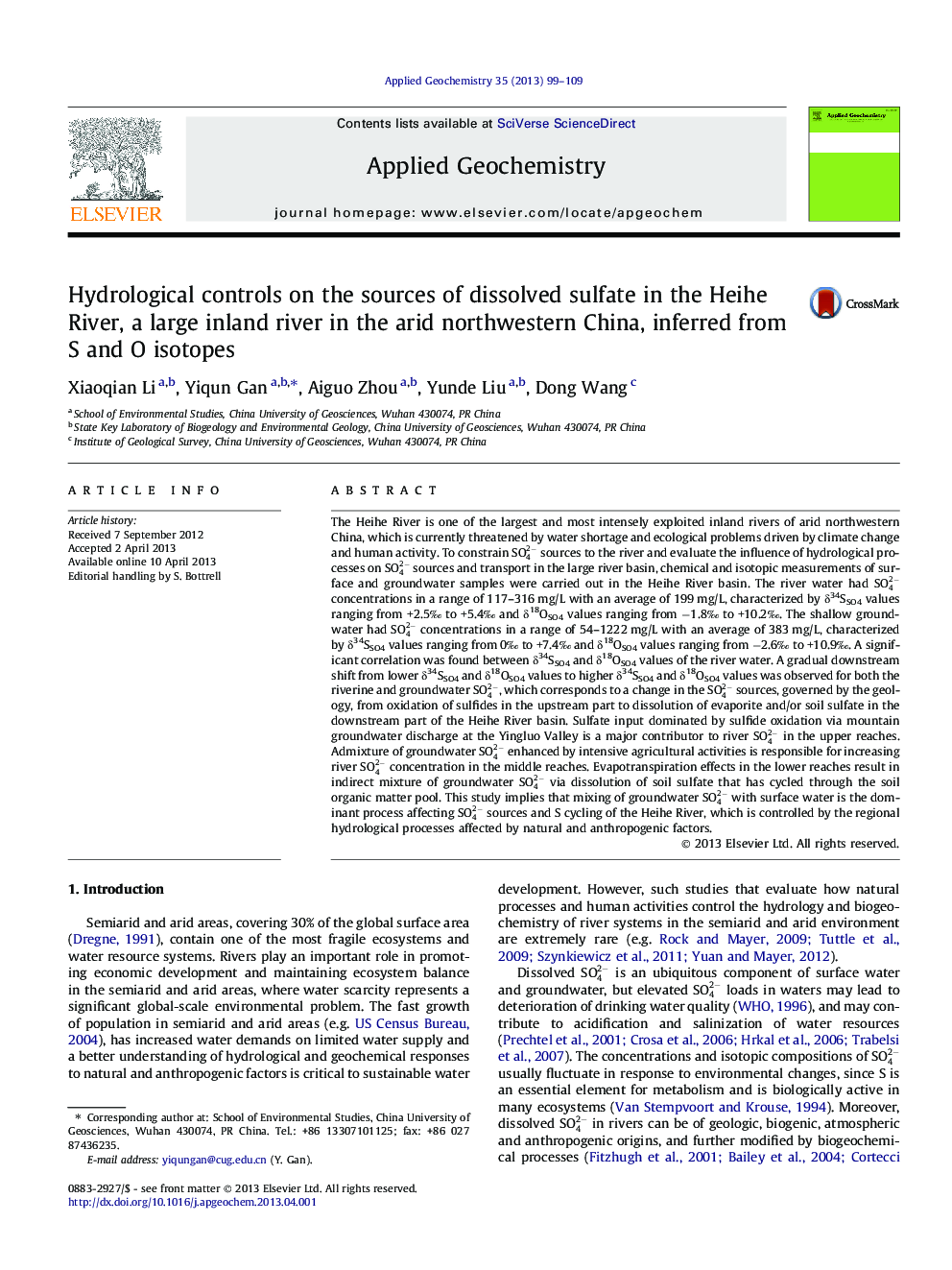| Article ID | Journal | Published Year | Pages | File Type |
|---|---|---|---|---|
| 6335340 | Applied Geochemistry | 2013 | 11 Pages |
Abstract
The Heihe River is one of the largest and most intensely exploited inland rivers of arid northwestern China, which is currently threatened by water shortage and ecological problems driven by climate change and human activity. To constrain SO42- sources to the river and evaluate the influence of hydrological processes on SO42- sources and transport in the large river basin, chemical and isotopic measurements of surface and groundwater samples were carried out in the Heihe River basin. The river water had SO42- concentrations in a range of 117-316 mg/L with an average of 199 mg/L, characterized by δ34SSO4 values ranging from +2.5â° to +5.4â° and δ18OSO4 values ranging from â1.8â° to +10.2â°. The shallow groundwater had SO42- concentrations in a range of 54-1222 mg/L with an average of 383 mg/L, characterized by δ34SSO4 values ranging from 0â° to +7.4â° and δ18OSO4 values ranging from â2.6â° to +10.9â°. A significant correlation was found between δ34SSO4 and δ18OSO4 values of the river water. A gradual downstream shift from lower δ34SSO4 and δ18OSO4 values to higher δ34SSO4 and δ18OSO4 values was observed for both the riverine and groundwater SO42-, which corresponds to a change in the SO42- sources, governed by the geology, from oxidation of sulfides in the upstream part to dissolution of evaporite and/or soil sulfate in the downstream part of the Heihe River basin. Sulfate input dominated by sulfide oxidation via mountain groundwater discharge at the Yingluo Valley is a major contributor to river SO42- in the upper reaches. Admixture of groundwater SO42- enhanced by intensive agricultural activities is responsible for increasing river SO42- concentration in the middle reaches. Evapotranspiration effects in the lower reaches result in indirect mixture of groundwater SO42- via dissolution of soil sulfate that has cycled through the soil organic matter pool. This study implies that mixing of groundwater SO42- with surface water is the dominant process affecting SO42- sources and S cycling of the Heihe River, which is controlled by the regional hydrological processes affected by natural and anthropogenic factors.
Related Topics
Physical Sciences and Engineering
Earth and Planetary Sciences
Geochemistry and Petrology
Authors
Xiaoqian Li, Yiqun Gan, Aiguo Zhou, Yunde Liu, Dong Wang,
